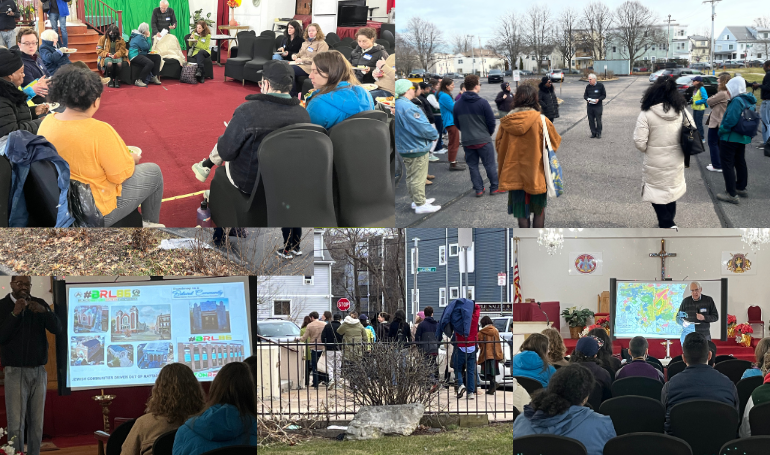
A Walk Through Boston’s Past: Uncovering Lost Communities and Unlearning Redlining
On February 10th, I joined the Boston Workers Circle and the Afrimerican Culture Initiative for a tour of Boston’s often forgotten history, uncovering stories of resilience, displacement, and the long shadow of discrimination.
Imagine standing in a church that used to be a bustling synagogue. That’s where we started, listening to Marlon Solomon, a powerhouse community leader, share knowledge about redlining – the practice of shutting Black folks out of loans and decent housing, basically trapping them in segregated neighborhoods. His words hit hard, setting the stage for what we were about to explore.
Our guide, Lew Finfer, a Boston community organizer with stories for days, led us through the streets armed with stories from the book “The Death of an American Jewish Community: A Tragedy of Good Intentions.” There was once a vibrant Jewish community in Roxbury, Dorchester, and Mattapan throughout the early and mid 20th century. A community diner with traditional Eastern European dishes and a place for the converging of politics and community. Synagogues serving as places of worship, celebration, and mourning. But things took a turn in the late 60s.
“Good intentions” from government agencies were taken advantage of by greedy financiers and realtors, and banks ended up pushing out the Jewish community. Redlining and blockbusting (scaring people into selling their homes by playing on racial fears) made the community shift drastically in a matter of a few years from a predominantly Jewish one to a predominantly Black community, with Blacks inheriting housing stock that should not have passed any realtor agency test. Many Blacks ended up having to abandon their houses after inheriting thousands in repair costs.
As we walked, the story unfolded before us. Vacant lots marked the spots where synagogues and community centers once stood, silent reminders of a vibrant past. We saw buildings scarred by neglect, reflecting the city’s disinvestment after the demographic shift. We heard stories of families uprooted, businesses shuttered, and dreams put on hold. It was a powerful reminder of the human cost of discriminatory policies, a stark contrast to the sanitized versions we often hear.
It also reflected a continuing theme in the Jewish community — the social cost for the many Jews who fled to the suburbs, assimilating into whiteness, and for some, into wealth — at the cost of our once vibrant community and cultural hubs. Of losing languages like Yiddish and our traditions of food and music, for the perceived stability and safety of suburban life.
But if the rise of visible white nationalism and Trumpism has taught us anything, it’s that just because some Jews are white and wealthy, that does not make any of us safe in the eyes of those who are gaining power. At the end of the day, we need to be neighbors and comrades with other marginalized groups across the world in order to build the kind of safe society everyone wants and deserves. This story of blockbusting and redlining is a cautionary tale of what happens when we are pitted against the friends we need the most. We need to come together, not apart.
